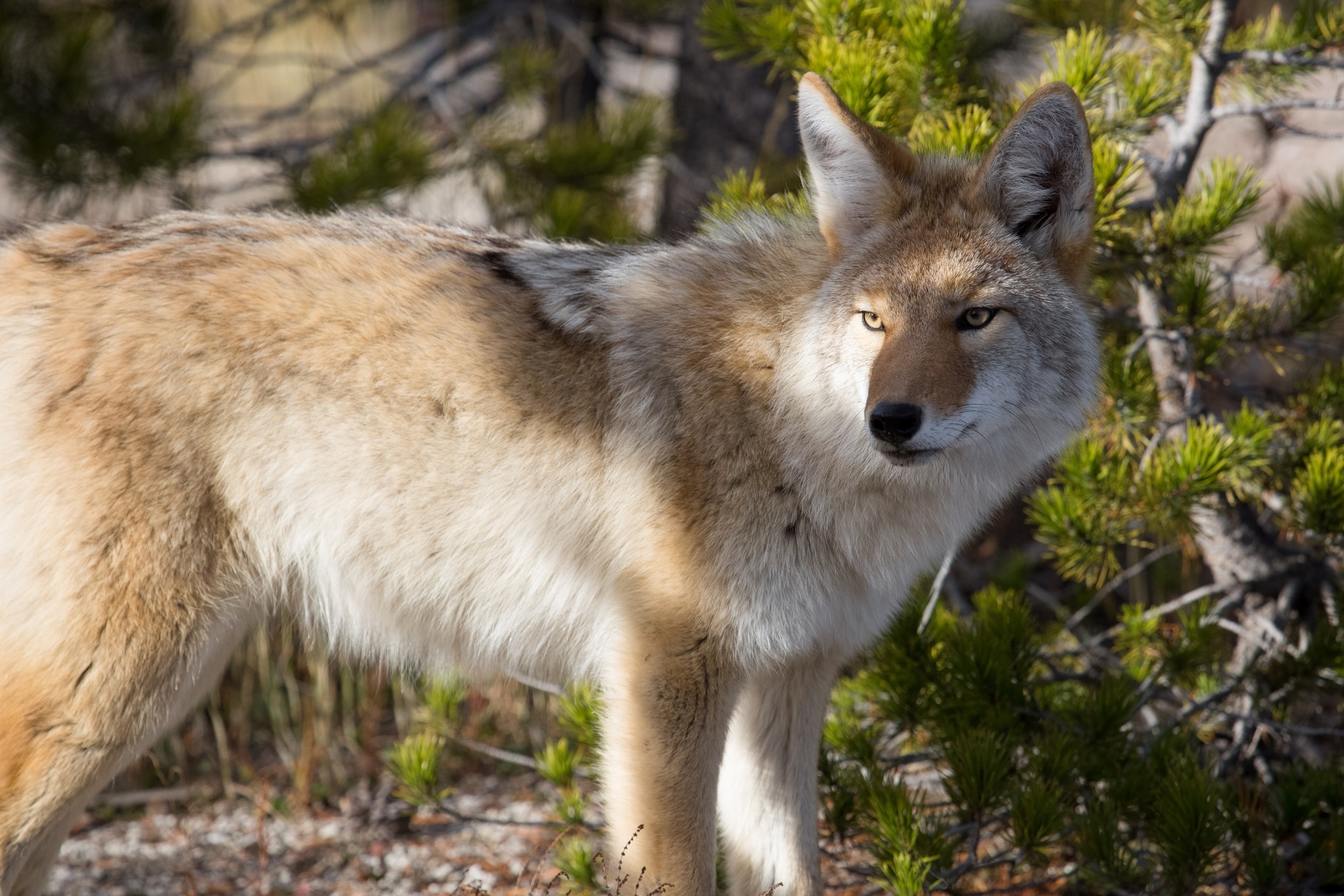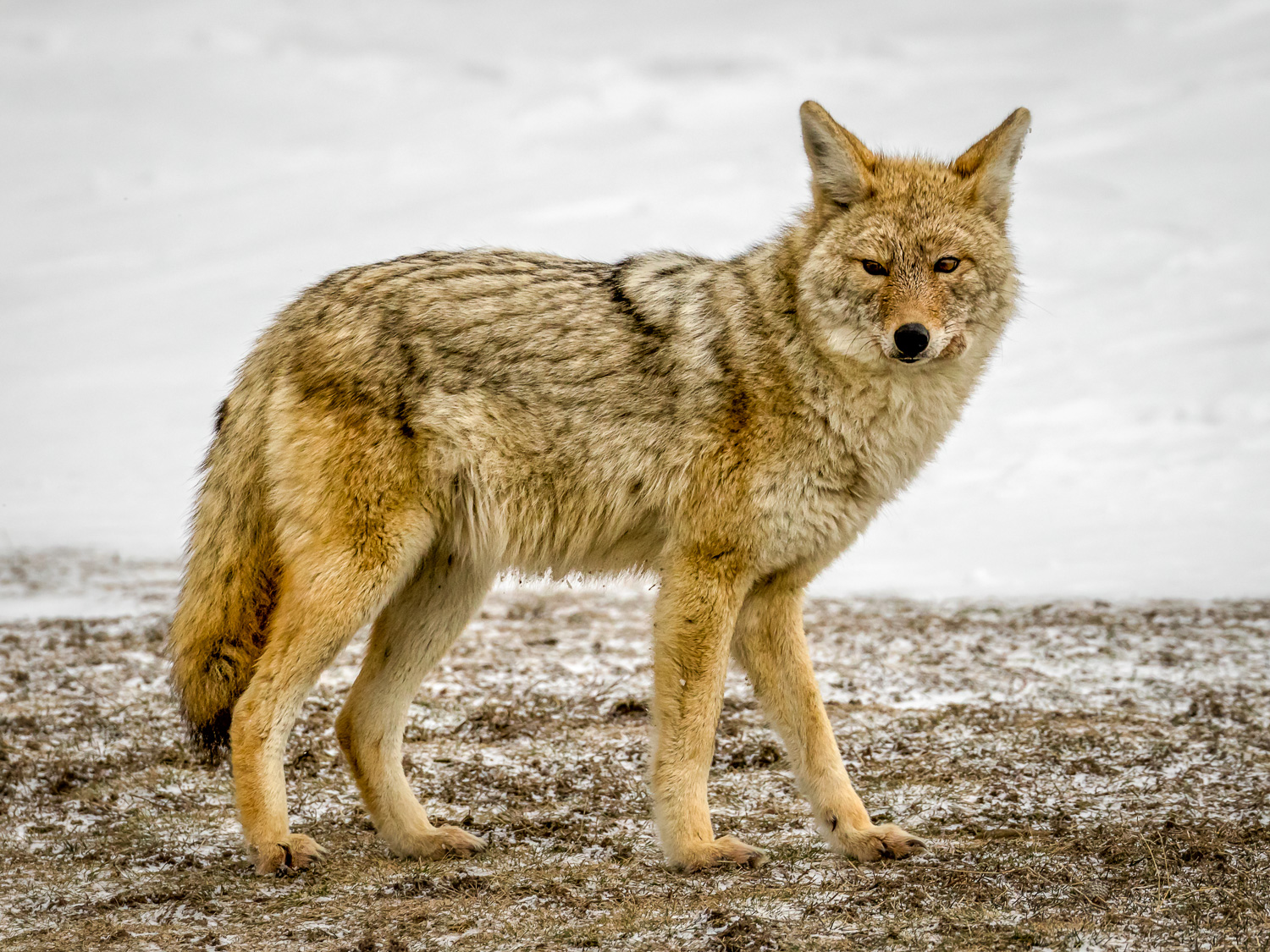Coyote Strike United Airlines Flight: An Unusual Encounter At O'Hare
A truly startling event unfolded recently at Chicago O'Hare, as a United Airlines flight encountered an unexpected runway hazard, leading to an emergency situation. This kind of incident, while rare, really grabs your attention, especially when it involves wildlife on a busy airport tarmac. It makes you think about all the things that could happen during a flight's journey, even before it leaves the ground.
You see, when we think about risks to planes, bird strikes are usually the biggest wildlife concern for airlines. In fact, today actually marks 16 years since a bird strike forced a US Airways flight to land in the Hudson River, a moment many folks still remember. But what happened at O'Hare was something quite different, something that doesn't come up very often, if you think about it.
This particular incident, involving a United Airlines flight and a coyote, just goes to show that airports are, in a way, often right next to wild spaces. So, sometimes, animals can wander into places we don't expect them to be, causing a bit of a stir for everyone involved.
Table of Contents
- The Incident Details: What Happened?
- A Closer Look at Coyotes and Their Behavior
- Wildlife Management at Airports
- Past Wildlife Encounters and Their Impact
- Ensuring Air Travel Safety
- Frequently Asked Questions
- Looking Ahead
The Incident Details: What Happened?
On January 12th, a United Airlines flight suffered a collision with a coyote during its departure out of Chicago O'Hare International Airport. This happened on a Sunday morning, and it certainly caused some unexpected changes to people's travel plans, as you can imagine. The flight, number 1727, was getting ready to head to Phoenix Sky Harbor International Airport in Arizona, but things took a turn very quickly.
United Airlines told CBS News Chicago that on that Sunday morning, flight 1727 was about to take off when its landing gear struck a coyote. It was a United Airlines Boeing 737 MAX 9, which, you know, is a pretty big plane. Flight crews initially reported a bird strike upon departure, according to the FAA, but it was later confirmed to be a coyote. The plane had to turn back to Chicago and landed about 40 minutes after it first left the gate, which, you know, must have been a bit unsettling for the passengers.
A United Airlines spokesperson told the Arizona Republic that the landing gear struck a coyote during takeoff. The plane had to return to O’Hare International Airport to have the landing gear examined, which is just standard procedure for something like this. Passengers on the flight were, as you might expect, rebooked on other flights to get to their destination. The coyote’s condition is currently unknown, which is a bit sad to think about, really.
- Old Lady With Glasses Cartoon Disney
- Rooney Mara And Kate Mara
- Mom And Dad Anniversary Quotes
- Old White Male Actors With White Hair
- Goth Asian
A Closer Look at Coyotes and Their Behavior
It's interesting to think about coyotes showing up at an airport, but animal experts say coyote mating season in Illinois was underway around that time. This might explain why a coyote was, perhaps, more active or moving around in unusual areas. Coyotes, you see, seem to have very large home ranges, so they cover a lot of ground. On my property, for example, I may not see a track for months, then it's like a coyote just appeared out of nowhere.
These animals are quite adaptable, and they can be found in many different places, even near big cities. We often talk about how coyotes and coyote sign will come and go on a property, which just shows how much they move around. Their movements are often tied to food sources, or, you know, during mating season, they might be looking for mates. I've heard reports of some really big coyotes, too; the largest female coyote I've ever shot was quite a size, and it makes you wonder how big y'all have seen coyotes get in Georgia, for example.
People who spend time observing coyotes, or even hunting them, learn a lot about their habits. Some folks use coyote urine on their trap sets, or, you know, use calls like "fox pro deer steak," "nutty nut hatch," or "adult" sounds to bring them in. We've even used thermal imaging to spot them in the dark, and heard sounds like "x24 howls, fights and breeding sounds" from a pack. So, they're quite active, and sometimes, they just end up in places you wouldn't expect, like an airport runway, which is really quite something.
Wildlife Management at Airports
Given incidents like this, it's clear that airports have a big job managing wildlife. Bird strikes are usually the biggest wildlife risk to airlines, as we mentioned earlier, but planes occasionally come across other animals while on the runway. This means airports have to be really proactive about keeping their grounds clear and safe for aircraft, which, you know, is a constant effort.
Airport staff often use various methods to deter animals. This could include things like managing vegetation, which basically means keeping the grass short so animals don't have good hiding spots. They might also use noise cannons or other deterrents to scare animals away. The goal is always to reduce the chance of any animal, whether it's a bird or a coyote, getting too close to active runways, because, you know, safety is the main thing.
It's a continuous challenge, though, because animals are, well, animals. They don't really understand airport boundaries. So, airport wildlife management teams are always on the lookout, trying to predict where animals might go and how to keep them away from planes. This incident with the coyote just highlights how important and ongoing this work is, which is really quite a lot to think about.
Past Wildlife Encounters and Their Impact
While a coyote strike is certainly unusual, wildlife encounters with aircraft are not entirely unheard of, as you know. The most famous example, perhaps, is the "Miracle on the Hudson" from 16 years ago, when a US Airways flight had to land in the Hudson River after hitting a flock of birds. That was a truly incredible moment, and it showed how quickly things can go wrong when wildlife gets in the way of a plane.
These kinds of incidents, whether it's a bird or a coyote, remind us that nature and human technology sometimes cross paths in unexpected ways. They lead to investigations, and often, new safety procedures are put in place to try and prevent similar events in the future. So, even though they can be scary, these events actually help make air travel safer in the long run, which is pretty important.
It's a testament to the training of flight crews and the robustness of aircraft that these situations, while serious, often end without major harm to passengers. The fact that United Airlines flight 1727 was able to return safely to O'Hare after hitting the coyote just shows how well pilots are trained to handle unexpected problems. That, you know, gives you a bit of peace of mind when you fly.
Ensuring Air Travel Safety
The safety of air travel is, without a doubt, a top priority for airlines and aviation authorities alike. Every incident, no matter how rare, is looked at very closely to figure out what happened and how to keep it from happening again. This coyote strike, for instance, will surely lead to a review of wildlife management practices at O'Hare, just to make sure everything is as good as it can be.
From the design of the aircraft to the strict training pilots receive, every part of air travel is built with safety in mind. Pilots go through extensive training to handle all sorts of unexpected situations, from engine trouble to wildlife strikes, which is really quite something. They learn how to assess damage and make quick, sound decisions, like returning to the airport if something goes wrong with the plane's systems, like the landing gear in this case.
Passengers might not always see all the behind-the-scenes work, but there are countless people dedicated to making sure every flight is as safe as possible. This includes airport staff, air traffic controllers, maintenance crews, and, of course, the flight crews themselves. So, while an incident like a coyote strike can be a bit alarming, it also shows how many layers of safety are in place to protect everyone on board, which is pretty reassuring, if you think about it.
Frequently Asked Questions
How often do planes hit animals on the runway?
Planes occasionally come across animals on the runway, but it's significantly more rare than bird strikes, which are usually the biggest wildlife risk. This is because animals like coyotes would need to be right on the runway when the plane is moving at speed, which, you know, doesn't happen every day.
What happens when a plane hits an animal?
When a plane hits an animal, like the United Airlines flight 1727 did with the coyote, the flight crew will typically report the incident to air traffic control. The plane might then return to the airport for an inspection of the affected parts, like the landing gear in this case, to make sure everything is safe for continued flight. Passengers are often rebooked onto other flights, which is just what happened here.
Is it common for coyotes to be near airports?
Coyotes are adaptable animals with large home ranges, so they can sometimes be found near urban areas, including airports. Animal experts noted that coyote mating season in Illinois was underway, which might make them more active. Airports have wildlife management programs to try and keep animals away from runways, but sometimes, you know, they still wander in.
Looking Ahead
The incident with the United Airlines flight and the coyote at O'Hare serves as a powerful reminder of the unexpected challenges that can arise in air travel. It highlights the ongoing need for robust wildlife management programs at airports and the incredible skill of flight crews who handle these unusual situations. Learn more about airport wildlife safety on our site, and for details on specific incidents, you can link to this page here.
While the immediate focus is on the specific event, it also prompts a broader conversation about how we coexist with wildlife, especially in areas where human activity and natural habitats intersect. The goal is always to keep everyone safe, both in the air and on the ground. For more information on wildlife management in aviation, you might want to check out resources from the Federal Aviation Administration (FAA), which, you know, has a lot of good stuff.
- Emma Curse Of Oak Island
- Snoop Steeplechase
- How To Grow Dreadlocks Fast
- Different Types Of Hair Gel
- Sophia Rosin

Coyote Free Stock Photo - Public Domain Pictures

Coyote in Rocky Mountain National Park | Rocky Mountain National Park

Yellowstone Coyote - T. Kahler Photography